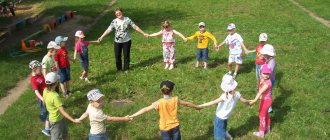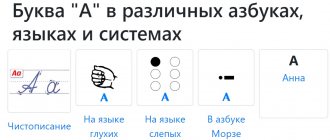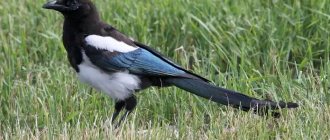Fitball gymnastics in kindergarten
- January 26, 2013
Competition “My Pedagogical Initiative - 2012”
Nomination “Methodological work in preschool educational institutions”
Experience working with fitballs in the educational activities of preschool educational institutions. Peculiarities of learning and development of children with hearing loss in physical education and health activities.
Fitballs are considered non-traditional equipment in kindergarten, but at the same time they have a good therapeutic effect.
Fitballs strengthen the muscles of the back and abdominals, create a good muscle corset, develop coordination and a sense of balance, but most importantly, they form the skill of correct posture, which is difficult and time-consuming to develop under normal conditions. In addition, the cardiovascular and respiratory systems are trained, endurance develops, and the mobility and flexibility of the spine increases.
Exercises on the ball help develop strength, energize, and increase blood circulation and metabolism.
Since 2009, our kindergarten has been attended by children with hearing impairment (hard of hearing and after cochlear implantation). For preschoolers with hearing loss, physical education plays an even greater role than for their normally developing peers, because they are characterized by a variety of changes in the motor sphere. The most characteristic and pronounced include:
- insufficiently precise coordination and uncertainty in movements,
- difficulty maintaining statistical and dynamic equilibrium,
- relatively low level of development of orientation in space.
Such features in the development of children are associated with disruption of the vestibular apparatus. Therefore, now in classes, special emphasis is placed on the development of the above physical qualities.
Therefore, in physical education classes and other forms of educational activities, it was decided to use fitballs - balls.
At the moment, the use of fitballs is especially relevant, because they have a number of advantages, among other equipment. Such balls, as a means of health-improving and corrective work, were chosen due to their specific effect on the musculoskeletal, ligamentous-muscular system. An elastic, unstable environment is necessary for the formation of the vestibular apparatus, the development of the mechanism of balance and rhythm of movements.
My experience of working with fitballs allows me to recommend them as a highly effective and affordable tool in the physical development of a preschooler.
Such balls significantly expand the possibilities of physical education and health work, and help to increase the effectiveness of psychological, pedagogical, correctional and rehabilitation support for the child.
Fitball - gymnastics in kindergarten
There are many different balls: with handles, “horns”, and oval, and with pimples. They not only have different shapes and sizes, but also bright colors. Children enjoy working out on such simulators.
Where can you use fitball balls?
Using fitball balls in classes combines the work of the motor, vestibular, visual and tactile analyzers, which are activated when performing exercises on the ball, thereby enhancing the effect of the classes.
Games with fitballs can be used not only in physical education classes, but also in everyday work:
- in classes as a physical education lesson;
- on a walk;
- in children’s independent games, relay races;
- in entertainment, holidays and leisure;
- in individual work;
- using breathing exercises,
- rhythm blocks with music;
- for mastering air traffic control and outdoor switchgear.
The use of fitballs in joint work with parents is very effective. Child-parent relationships are especially well normalized. Children feel the joy of joint physical activity, as well as the support of their parent.
Fitball – balls add variety to leisure time, holidays and entertainment. Techniques using chants and musical accompaniment help coordinate movements, breathing and speech, since the individual internal rhythm of such children is often slow. You can also combine breathing exercises with exercises on balls, using their vibration properties.
The use of fitballs increases children’s emotional involvement in the activity.
Increases the effectiveness of health-improving tasks and the absorption of material.
Also, fitballs allow you to diversify outdoor and relay games; they give children joy and health.
Stages of training
Ball training takes place in several stages.
But when starting to work on balls, you should know that the ball must correspond to the age of the child - 45 cm - 4-5 years; 50cm-5-6 years; 55cm-6-7 years. When landing on the ball, the angle between the thigh and shin should be 90*.
Oval balls are convenient because the support becomes more stable; such balls are suitable for children at the first stage of learning and for those who are afraid of falling.
And you can start using fitballs from an early age.
A ball for young children is a means of communication. It helps to quickly find contact with the child. Forces the child to be in motion all the time, thereby constantly arousing new interest. (Roll, toss, clap, jump on the ball, ride on it, lie down).
The purpose of stage 1 is:
- mastering the ball as equipment. Here you can use exercises such as any rolling, hitting the ball, patting, throwing in pairs, in a circle.
- learning how to sit correctly on the ball.
The second stage is the most labor-intensive:
Stage 2 goal:
- teach children the basic principles. There are about 7-8 such positions on the ball.
- training of major muscle groups, including respiratory ones.
Stage 3
(depends on the level of development of Stage 2 ).
The purpose of this stage is:
- teach basic dynamic movements with the ball.
Children perform exercises in groups, from any starting position, jumping on a ball in place and in motion, in free activity.
Exercises with fitballs can be carried out as part of the lesson, using them only in the main part.
You can also structure the lesson so that the balls are used throughout the entire lesson.
Therefore, to achieve a therapeutic and preventive effect, complexes with fitballs are included in the educational process regularly in courses 3-4 times a year, for 1-1.5 months. This amounts to 10-12 lessons per course.
Of course, all activities for preschoolers are structured in a playful way, since play is the leading activity of a preschooler.
What problems are solved when using fitball gymnastics?
Classes in the senior and preparatory groups, after mastering the three stages, can be carried out using balls throughout the entire lesson. In structure, it resembles a classic physical education class with a strict three-part form, where there is:
Introductory part
- development of all types of attention,
- perception and memory,
- orientation in space based on basic movements.
Main part
- mastering general developmental exercises,
- exercises on fitballs,
- main types of movements.
Final part
- outdoor game,
- relaxation.
Let's look at each part of the lesson separately. What motor tasks and exercises can be included in this part?
Introductory part 3-5 min
- Formation, different types of walking, hand movements with the ball
- Running while dribbling the ball, rolling
- Jumping with the ball between the legs, with advancement, sitting on the ball.
- Walking with breathing restoration and various types of changes in movement.
Main part 15-20 min
- strengthening the muscle corset around the spine
- increasing mobility and flexibility of the spine
- cardiovascular training
- improving the drainage function of the lungs and strengthening the respiratory muscles.
Final part 3-5 min
- restoration of the cardiovascular and respiratory systems
- includes quiet play and relaxation exercises.
List of used literature:
- 1. Correctional “Program for the education and training of hearing-impaired preschool children.” / N. D. Shmatko, L. A. Golovchits and others - Moscow: “Enlightenment”, 1991.
- Fun physical education for children and their parents. Entertainment activities, holidays, hikes. / Kazina O.B. – Yaroslavl: “Development Academy: Academy Holding”, 2005. – 140 p.
- Improvement of children's health in a kindergarten. /L.V. Kochetkova. – M: Sphere shopping center, 2005. – 112 p.
- Health-forming physical development: Developmental motor programs for children 5 – 6 years old: /I.K. Shilkova - M.: “Humanite. ed. VLADOS center", 2001. – 336 p.
- Health training system “Isoton”, “Sports technologies”
Presentation
Author: Svetlana Nikolaevna Stepanova, physical education teacher of the highest qualification category, State Budgetary Educational Institution Secondary School No. 1747, preschool department “Olenyonok”, Moscow. Work experience 13 years. Awarded a Certificate of Honor from the Ministry of Education and Science of the Russian Federation.
Fitball for children
In pediatric practice, exercises on fitballs are even used to treat infants in their first year of life. They are indicated for children with diseases of the nervous system and musculoskeletal system. Classes are conducted with the help of an instructor or parents who hold the child by the arms or legs and roll him on the ball in a certain way. Such training is carried out daily or every other day.
Peculiarities!
Training with the use of a correction ball is safe from a technical point of view, since it is made of a very strong elastic material - ledraplastic. Even with mechanical damage, the fitball will not burst, but will slowly deflate without injuring the child.
At an older age, children do fitball aerobics themselves under the guidance of adults. Such exercises are even included in the curriculum for preschoolers in some kindergartens. Training takes place in a playful way in order to interest children and instill in them a love of physical education.
Fitball gymnastics is necessary not only for children with health problems, but also for absolutely healthy children, in order to take care of their harmonious physical development.
How animals treated eagle owls
One day an eagle owl decided to find out who was his friend in the forest and who was his enemy. He lay down in his nest, hung his head and groaned as if he was very sick. A bear was walking past and heard an eagle owl groaning throughout the forest (the bear) .
- What's wrong with you, owl? - asks. - Why are you moaning so much?
“Yes, I’m sick, I’m dying,” the owl answers.
“Wait to die,” says the bear, “I’ll cure you now,” and he left.
And the eagle owl moans even louder. The hare heard him. I was scared at first, and then I approached the tree - I need to find out what happened! (bunny)
- Hey, owl, what happened? - asks.
- Oh, I'm completely sick. I’ll probably die soon,” says the owl.
- No, owl, no! Wait a little, I'm coming now! - And running. “Well,” the eagle owl thinks, “everyone has left me, and they’re still called friends!” And he groaned more than ever from insult. Even the snake heard him, raised its head, looked sympathetically and crawled away (the snake) . And then the moose galloped past. They stopped under a tree and listened to the owl groan. They lowered their heads and thought. Then they quietly consulted and galloped off in different directions, only the dust rose behind them (horse) . And the eagle owl groans.
He even woke up the bat, which usually sleeps during the day. She flew to the eagle owl's nest and began asking questions (the bat) . A bat sits in an eagle owl’s nest and consoles him:
“Only you are my friend,” says the owl, “and everyone else has abandoned me.”
Suddenly they hear brushwood cracking on the path. An eagle owl looked, and the bear had brought him a whole basket of nuts .
“Heal yourself,” he says, “Filya, eat nuts, they are your strength.”
All the animals in the forest had already heard about the owl’s illness, they hurried to him, carrying what they could. The fox came running: “The snake sent me to you. She crawls slowly, and she’s very old. So I told you to bring some dry raspberries. Drink raspberry tea, Filya, it helps a lot.” And she twirls her tail - she can’t wait to cure the owl as soon as possible (fox) .
Then the bunny arrived and brought a carrot:
– Eat, Filya, it contains a lot of vitamins! - And he just jumps up and down, watching how the owl will gnaw the carrot.
The moose rushed after him, and they carried the lizard from the other end of the forest so that it could examine the patient. She was already old, but all the animals were treated by her. The lizard raised its tail, greeted the patient (the lizard) , and then gave him a medicinal root.
Even a small spider ran up to the eagle owl and began to treat him with a fly (spider) . And the owl realized how many true friends he had in the forest. And he even felt ashamed that he had disturbed so many animals. And the animals arranged a real feast in the clearing in honor of the owl’s recovery.
Organizational and methodological instructions for exercises on fitballs
Exercises on gymnastic balls take place in 4 stages:
- First, exercises on fitballs are given in combination with classical aerobics. The training includes 5-6 exercises using balls. At first, children need backup because they are not always able to stay on the ball.
- Then the emphasis is placed on the correct execution of tasks, physiological sitting on the ball, and maintaining balance. Gymnastics elements are performed sitting or lying on a fitball. Particular attention is paid to relaxation exercises.
- At this stage, the main task is to increase the pace so that all children learn to perform the exercises synchronously. Additionally, stretching tasks are introduced.
- After the basic program has been mastered, you can improve the technique of performing gymnastic elements and gradually complicate them.
It is advisable to practice fitball with children not only in kindergartens, but also at home. A gymnastic ball will be a useful acquisition not only for a child, but also for the whole family, since fitball aerobics has virtually no contraindications, and physical education is important at any age.



